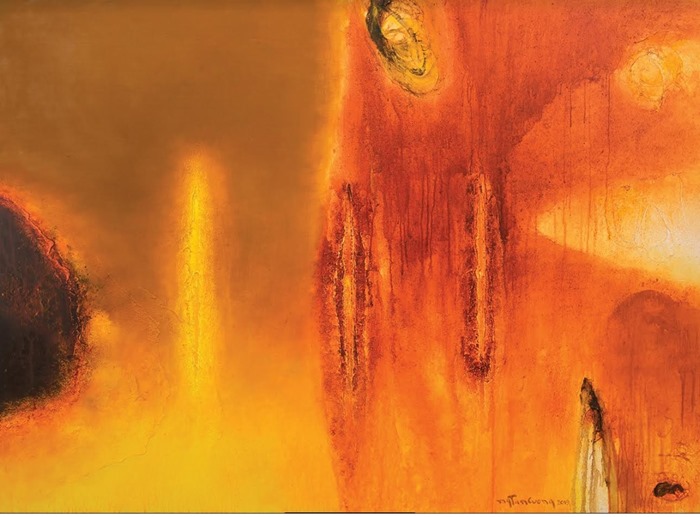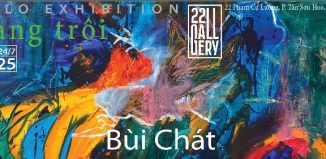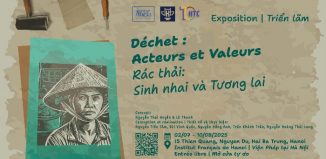Triển lãm “Ánh sáng” của Nguyễn Tấn Cương

Khai mạc: 17:00, thứ sáu 20/12/2019
Triển lãm: 20/12/2019 – 20/01/2020
Cuci Art Studio
Tầng 2, 25 Hàng Bún, Ba Đình, Hà Nội
Thông tin từ nhà tổ chức:
Cuci Art Studio trân trọng giới thiệu triển lãm cá nhân ‘Ánh Sáng’ của nghệ sĩ Nguyễn Tấn Cương. Triển lãm khai mạc vào lúc 17h Thứ Sáu, ngày 20.12.2019 đến ngày 20.01.2020 tại Cuci Art Studio (tầng 2, 25 Hàng Bún, Ba Đình, Hà Nội) gồm 20 tác phẩm tranh kích thước vừa và lớn trên toan.
Một triển lãm cá nhân được Nguyễn Tấn Cương ấp ủ gần một thập kỷ sau mười năm gián đoạn trong thế giới nghệ thuật. Nhưng đây là khoảng thời gian “chìm vào bóng tối” rất cần thiết để cho chúng ta thấy được sự biến hóa trong tâm hồn nghệ sĩ. Với cuộc triển lãm mang tên “Ánh Sáng” lần này Nguyễn Tấn Cương đã cho người xem thấy thì ra bóng tối cũng cần thiết như ánh sáng. Chính bóng tối nâng tầm ánh sáng lên.
Chúng ta có thể cảm nhận được làn da bỏng rát, cái cảm giác như đang bị lột da trong tác phẩm “Mùa hè”; cơn khát của trái đất đang khô nẻ trong tác phẩm “Mưa”. Và cả quang cảnh bom đạn khói lửa như bao trùm lên các tác phẩm cỡ vừa của Cương. Càng nấn ná ở lại với các nét vẽ của Cương cùng kết cấu nổi mà anh tạo ra với sợi đay, chúng ta như chìm trong từ trường đau thương cuộc sống của nghệ sĩ. Một từ trường thoạt nhìn mang tính cá nhân nhưng sâu xa lại đại diện cho toàn xã hội. Nó giống như cuộc chiến tranh có nhiều xung đột, nỗi đau của ánh sáng và bóng tối.
“Tôi lớn lên trong thời kì chiến tranh và chứng kiến không biết bao khổ đau vô tận của con người” – Cương bộc bạch. Những ký ức của các cuộc chiến ám ảnh đến nỗi những con người thuộc thế hệ như Cương chưa bao giờ thoát khỏi nỗi đau mà nó mang lại. Sự chịu đựng ấy hiện hữu trong tác phẩm thông qua kĩ thuật vẽ trừu tượng của Cương. Trong thời kỳ mà các câu chuyện về sự chịu đựng của các thế hệ trước đã bị bão hòa với người trẻ do phải tiếp nhận quá nhiều thông tin. Nghệ thuật trừu tượng là hình thức phù hợp để truyền tải trải nghiệm. Chúng ta thường hướng về những thứ trừu tượng hơn là những gì chắc như đinh đóng cột. Đây có thể không phải ý đồ ban đầu của Cương nhưng những tác phẩm của anh đã mang tính giáo dục về cảm xúc đặc biệt với những ai chưa từng đi qua chiến tranh.
Với các tác phẩm kích thước lớn vừa thâm trầm nhưng lại vừa mang tính vũ trụ học và ta có cảm giác Cương chứa đựng tất cả nỗi đau vào trong đấy. Tác phẩm “Ánh Sáng” đã gợi nhớ lại bầu không khí của các thờ Thiên chúa trung cổ như nhà thờ Sistine (tại Van-ti-căng). Sự tàn ác được thể hiện trong tác phẩm khiến chúng ta cảm nhận được sự mênh mông trong một trải nghiệm tinh thần. Điều khiến nghệ sĩ trở nên khác biệt khi hướng đến Đấng tối cao chính là sự bất phục tùng.
Trong các tác phẩm hình ảnh cơ quan sinh dục của nữ giới được biểu thị như là nơi trú ẩn và khuây khỏa. Tác phẩm “Ánh Sáng” và loạt tác phẩm “Nguồn” tính nữ đã được biểu thị như là Đấng tối cao – khác với truyền thống của thời trung cổ coi đàn ông là biểu tượng của Chúa. Tính nữ, dù được biểu thị dưới dạng cơ quan sinh dục hay hình bóng của nữ giới cũng là trung tâm trong tác phẩm của Cương.
Tuy nhiên, tính nữ vẫn là một khái niệm xa vời – theo cách Cương nói “rất khó để nắm bắt”. Với Cương, tính nữ là bóng tối, là cái mà anh đang cố để bắt lấy. Các tác phẩm của Cương có thể dẫn chúng ta tới ánh sáng (giống như cách não bộ của con người luôn luôn hướng về nơi có ánh sáng) nhưng sau khi tha thẩn với các tác phẩm của anh, chúng ta sẽ dễ dàng hướng tới bóng tối nhiều hơn. Câu nói của Tanizaki “Nếu không có bóng tối, thì cái đẹp sẽ không tồn tại” dường như đã được thể hiện trong toàn bộ triển lãm “Ánh Sáng” của Cương. Sau tất cả, bóng tối của Nguyễn Tấn Cương chính là những người phụ nữ trong cuộc đời của anh – nữ tướng, người yêu, con gái và cả Đấng tối cao. Bóng tối là nàng thơ của Cương và ánh sáng là cái anh mang tới cho chúng ta trong triển lãm này.
Nguyễn Tấn Cương
Lớn lên trong cái nôi nghệ thuật miền Nam và bắt đầu tiếp xúc với giá vẽ từ năm 12 tuổi, Nguyễn Tấn Cương (sn.1953, TP. Hồ Chí Minh) theo đuổi hội họa và tốt nghiệp Trường Quốc Gia Cao Đẳng Mỹ Thuật Sài Gòn năm 1973. Lúc này, nghệ thuật miền Nam vẫn đang trong giai đoạn phát triển tự do, cởi mở với các trào lưu nghệ thuật quốc tế, song hành cùng nhiều hoạt động sôi nổi của văn nghệ Sài Gòn. Thừa nhận mình tập tành trừu tượng từ những năm 1980, nhưng đến khi nghệ sĩ Nguyễn Trung từ Pháp trở về năm 1991, Nguyễn Tấn Cương mới chuyên tâm thực hành trừu tượng cùng Nhóm 10 Người lúc bấy giờ. Sau đó, ngôn ngữ nghệ thuật này trở thành trào lưu, lan rộng khắp cộng đồng nghệ thuật từ Nam ra Bắc. Đến hôm nay, khi nhắc đến nghệ sĩ thực hành trừu tượng đã thành danh ở miền Nam, không thể bỏ qua cái tên Nguyễn Tấn Cương, bên cạnh Tạ Tỵ, Nguyễn Phước, Nguyễn Trung, Trần Văn Thảo, Đỗ Hoàng Tường.

















